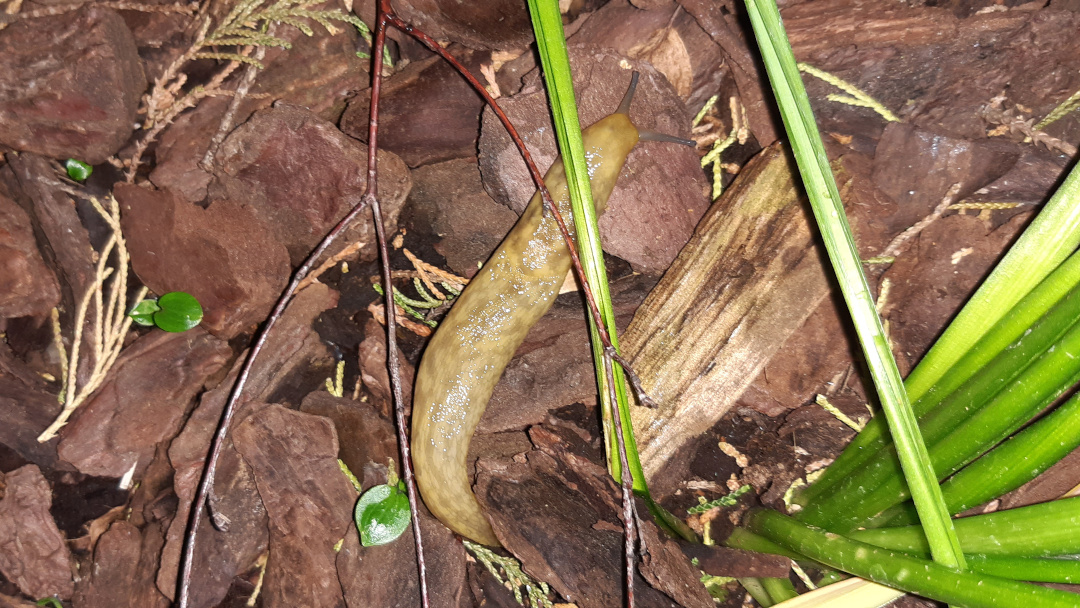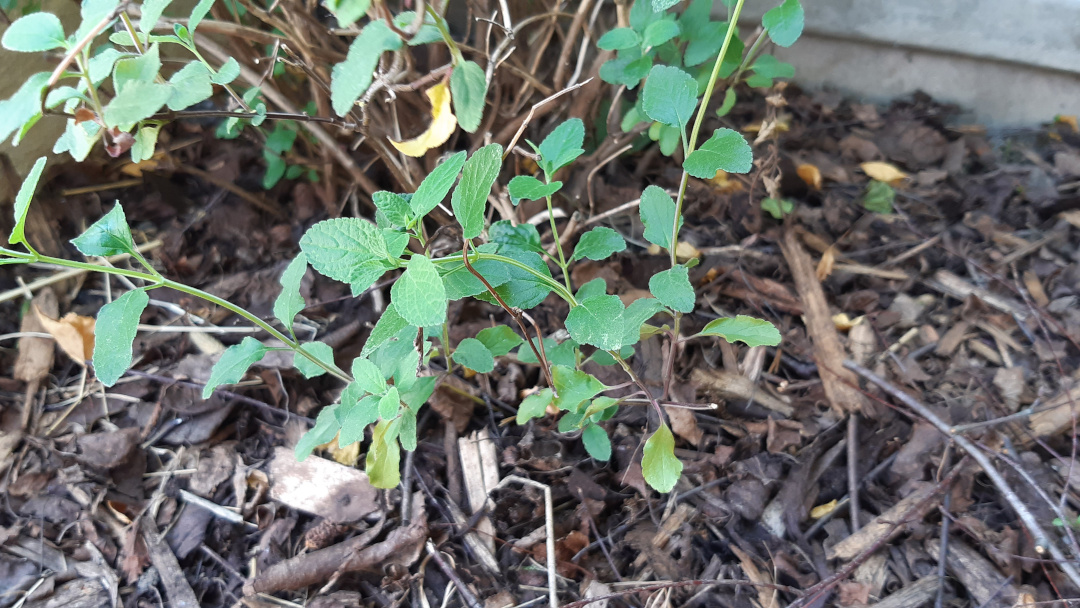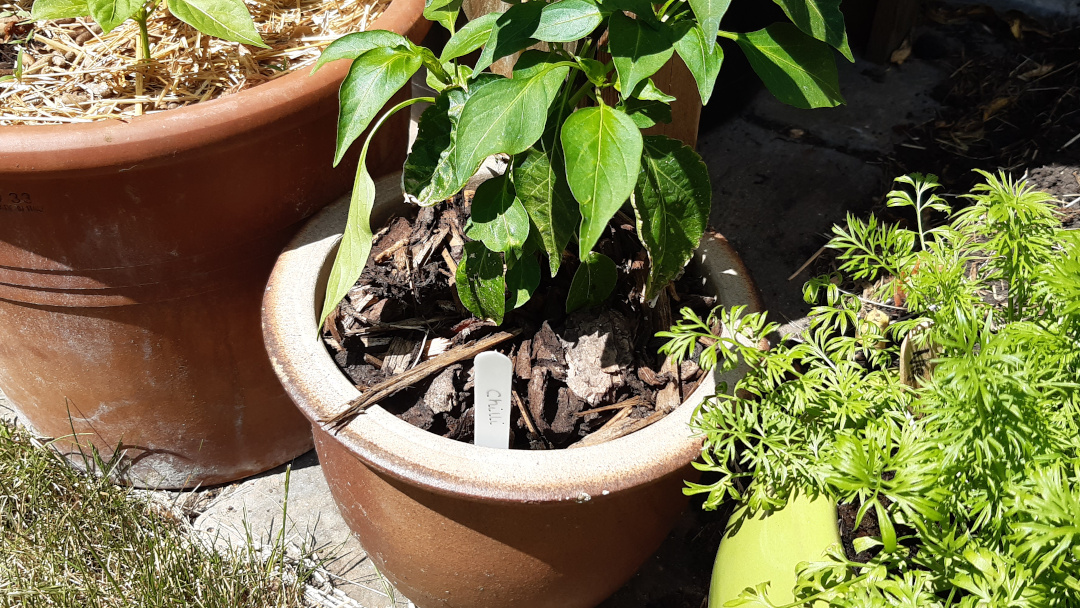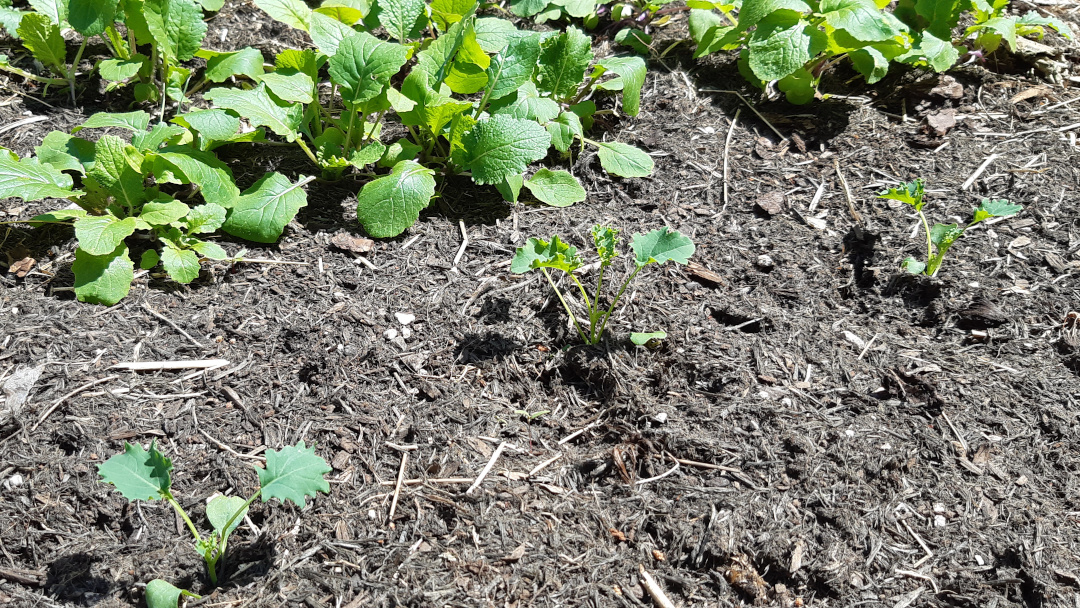Back to Basics
Mulching
It’s quickly become my favourite thing about growing fruit & veg in the garden and I’m always very eager to talk about it for hours, to people who’s eyes glaze over when I start comparing hay vs straw mulch and what they each add to the nutrients of the soil when………
What is “Mulching”?
Mulch is an organic material which is added to the soils surface, to feed and protect the soil.
Mulching is simply the action of applying the mulch. Depending on the type of mulch, this is usually applied as a 5-10cm layer over the soil.

Why mulch?
Why not mulch?! That’ll hopefully become clear if my excitement and enthusiasm comes across digitally.
Mulching has the following main benefits:
- It protects the soil from the heat of the sun
- It encourages more insects and soil life
- It helps retain moisture in the soil
- It adds nutrients to the soil
- It protects the soil from frost
It really does everything you need it to.
What to look out for
There are very few drawbacks to mulching but you do need to keep an eye on:
- Could be a home for pests
- Can add a small cost onto maintaining your growing area (depending on what you use)

Methods
There are a few ways of mulching that I have used and each have their own benefits. Hopefully you can find something suitable from this list:
1. Hay
For us, this is the easiest and most cost effective mulch. As we own guinea pigs (see the benefits of keeping them here) we have lots of left over hay which is filled with their droppings, which is full of nutrients.
This is applied thickly over the surface of the ground, raised beds or pots. When it rains, the droppings are soaked into the soil, adding nutrients.

The hay also promotes lots of worms which are now protected from birds which start eating the broken down hay, pulling it deep down into the soil.
Hay also keeps the stems of plants protected from frost and is great to use when getting things started early in the year, or when overwintering crops.
If you don’t have pets which use hay, it can be picked up fairly cheaply by the square bale. Check your local farms or and nearby keepers of horses.
Some people find it a bit of an eyesore as it doesn’t look very natural. If you’re going for a natural look in your garden, this will stick out a little.
2. Leaves
This one is free, which is a big plus. It’s also quite attractive as it just looks like a forest floor.

Simply rake up the fallen leaves, twigs and debris from your garden and scatter over the surface. It has all the same benefits as hay.
3. Newspaper
Using newspaper has, in my mind anyway, a more specific use case.
It’s fairly unattractive to use in the garden on its own but it will protect plants from contact with the surface very well. For example, laying newspaper under a strawberry plant would be very effective at keeping the fruit free from soil contact.
It doesn’t contain as much nutrients as the other varieties but has the benefit that is can be picked up for free and can be applied much thinner than other mulches.
It also needs to be weighed down or you risk it flying away in a strong wind.
Applying newspaper under another type of mulch (e.g. compost or hay) is very effective and makes an excellent weed suppressor.
4. Wood chips
I usually only apply wood based mulches under my flowers or shrubs, as I have read over the years that it reduces key nutrients in the soil and reduces seed germination.
From my research since, it seems that most of the myths simply aren’t true. This article was a good read and gives examples of the success of growing fruit and veg using wood based mulches.

The article does confirm the seed germination issue however.
If you only transplant in your garden, or if you’re careful about clearing the mulch before sowing, wood based mulches could be an attractive and effective choice.
5. Compost
If you practice the no-dig method of gardening, where you add nutrients to the surface of the soil using compost rather than digging in, then you’re already mulching with compost.
The benefits are that you can make your own and you know the contents of the mulch are 100% organic, as you added it to the composter yourself.

Mulching with compost is attractive (as it looks like soil) and makes for very easy transplanting and sowing.
Using compost is not as effective with protecting from frost however as it compacts over time and holds onto lots of moisture.
We add our layer of compost each year and then use a variety of the other mulches on top.
Share your learnings
So, go into the world and mulch. Mulch like your life depends on it… but let us know how you get on and please give us your tips and advice for mulching when growing fruit & veg.
If you liked this article, consider joining us on social media where the community shares their stories and tips:
Article written on Jun 02, 2020
Updated Jun 02, 2020